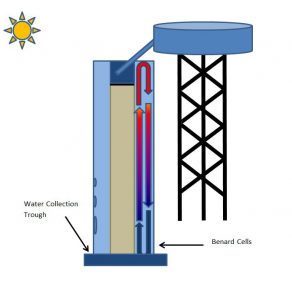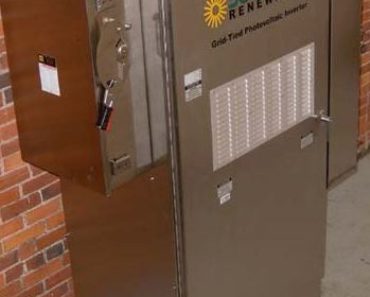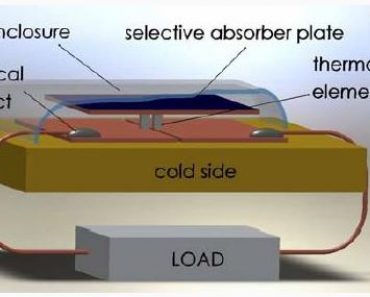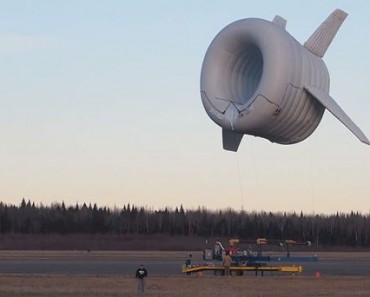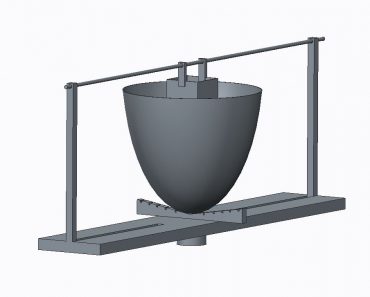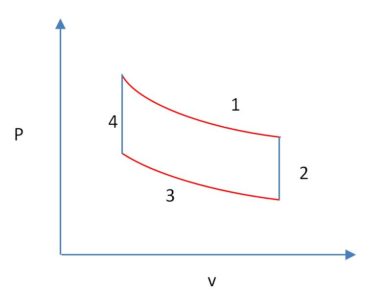With the exponential rise in population, fresh water sources are getting under increasing strain. The rise of population coupled with global warming is compounding the problem. There is also the issue of high precipitation (rainfall) zones moving away from the population centres. Our planet is losing bio diversity at an alarming rate. The population on the planet has crossed the 7.4 billion, increasing the demand on food produce and bringing the peak water scenario ever closer. In addition to these concerns, the irrigable land area is also declining in due to rising soil salinity. One solution that can redress all these ills is the desalination of salty water to produce distilled water.
With almost 44% of the world population living in the vicinity of the coast, sea water desalination is an extremely plausible option. However because of the high latent heat of water (energy needed for evaporation), the process is extremely energy intensive. Note that every kilogram of water needs 2265 kJ to evaporate at atmospheric pressure. During the last 50 years, research has been carried out on different types of desalination modes in search of a more productive technique. These include Reverse Osmosis, Multi Stage Flash, Multi Effect Distillation and Mechanical Vapour Desalination. All four technologies have shown a lot of promise but have either high running costs or require specialized equipment.
One technique that has almost zero running cost and very low installation cost is Solar desalination. It is interesting to note that solar desalination in one form or another has been used by mankind since time immemorial [1]. Solar stills due to their simplistic designs are extremely easy to make and install. Floating solar stills are now a compulsory part of marine survival kits in lifeboats. Despite the obvious benefits, large scale solar desalination has been kept at bay by fossil fuel based thermal desalination techniques because of their higher productivity. In many areas around the world scarcity of natural potable water has created a market for filtered bottled water. The roles of many multinational profiteering on this fundamental human need and right has been criticized in the documentary Bottled Life. The business of selling water has in fact bought over the will of many governments in the developing world to provide clean water for their populace. In light of these political dynamics, a cheap and productive solar water desalination plant will go a long way in empowering people and alleviating water poverty.
Towered Solar Desalination Plant
In 1991, Akhtar Iqbal Zuberi, an Engineer from Pakistan’s premier engineering institution NED designed a solar desalination tower that proved to be most efficient among all designs. Normally, the desalination equipment employ a horizontal configuration. In contrast, it was the vertical arrangement (particularly the height of the tower) in Zuberi’s design that was the most significant factor improving efficiency. The plant dimensions at the base were 1.07 m × 0.46 m and it had a height of 3.05 m. It produced about 12 liters of drinkable water everyday. This means that the plant has a production footprint of 40 liters of water per square meter per day much higher than 2-4 litres/m2 produced by solar stills of the same footprint. Ironically Zuberi’s design was shelved despite the water crisis hitting the city for which it was designed.
In thermal engineering, the study of cavity (such as in double glazed window) has been extensive. From these studies it has been found that a convection loop can develop between two parallel surfaces at different temperatures. The fluid picks up heat from the warm surface and rises and as it comes in contact with the cold surface, the fluid loses heat and vapour condensation occurs. This vapour slips down the cooler surface under the action of gravity and can be collected from a trough at the bottom. Schematics of Zuberi’s design are shown in the figure.
As can be seen, there are two separate tanks. The more elevated vessel is a feed tank which feeds salty water to the smaller tank on top of desalination tower. The desalination tower is covered with an offset on all sides by a glass of similar shape. Once the tank on top of the desalination tower is filled, salty water spills down the inner walls of the tower. Sunlight passes through the glass and warms the inner surface. The gap between the inner tower walls and the glass provides room for a convection current. The height of the tower allows the air to heat up even more as it rises which enhances the evaporation rate. The evaporated water leaves the salt behind and condenses at the inner glass pane. If the desalination tower is close to the sea, a continuous sea breeze would constantly cool the glass surface further increasing the temperature difference between the warm and cool surface. The desalinated water is collected in a trough located at the bottom of the glass while salty water is drained off from the bottom of the column.
There are two things that Zuberi’s plant does remarkably. First as mentioned above, for every meter square footprint the plant produces 40 litres of distilled water. Secondly the plant produces water of extremely very high purity (only 16 ppm of salt content). Notice that in USA drinkable main water has 500 ppm of salt content.
Further Modifications
Modifications can be made to the solar desalination tower plant to enhance its productivity. If situated along the coast line, wave power can be used to generate a partial vacuum inside ( in the cavity). This will allow water to evaporate at even lower temperatures improving the yeild of distilled water. The Solar desalination plant could also work in conjunction with gas heating. The supplementary use of gas would provide an additional layer of output control. It will also ensure that on cloudy days when sunshine is diffuse and limited, the plant still keeps producing potable water.
The solar tower desalination plants would work most cost effectively in coastal areas where the average daily solar radiation is above 4 KWh/m2. In other words, regions that are arid and receive more direct sunshine and less diffuse solar radiation are more suitable. Such plants can also be erected in land locked areas where brackish water is available from underground aquifers. However, tapping into aquifers may not be environmentally sustainable. The water from the solar desalination tower can be fed to greenhouses for growing crops in arid regions.
References:
- Kalogirou, S. (2009). Solar energy engineering: Processes and systems. Burlington, MA: Elsevier/Academic Press.
- BBC World Water Crisis
- Drinking Water Quality Standards
- Bottled Life, The movie
Please feel free to share this article using the buttons below

